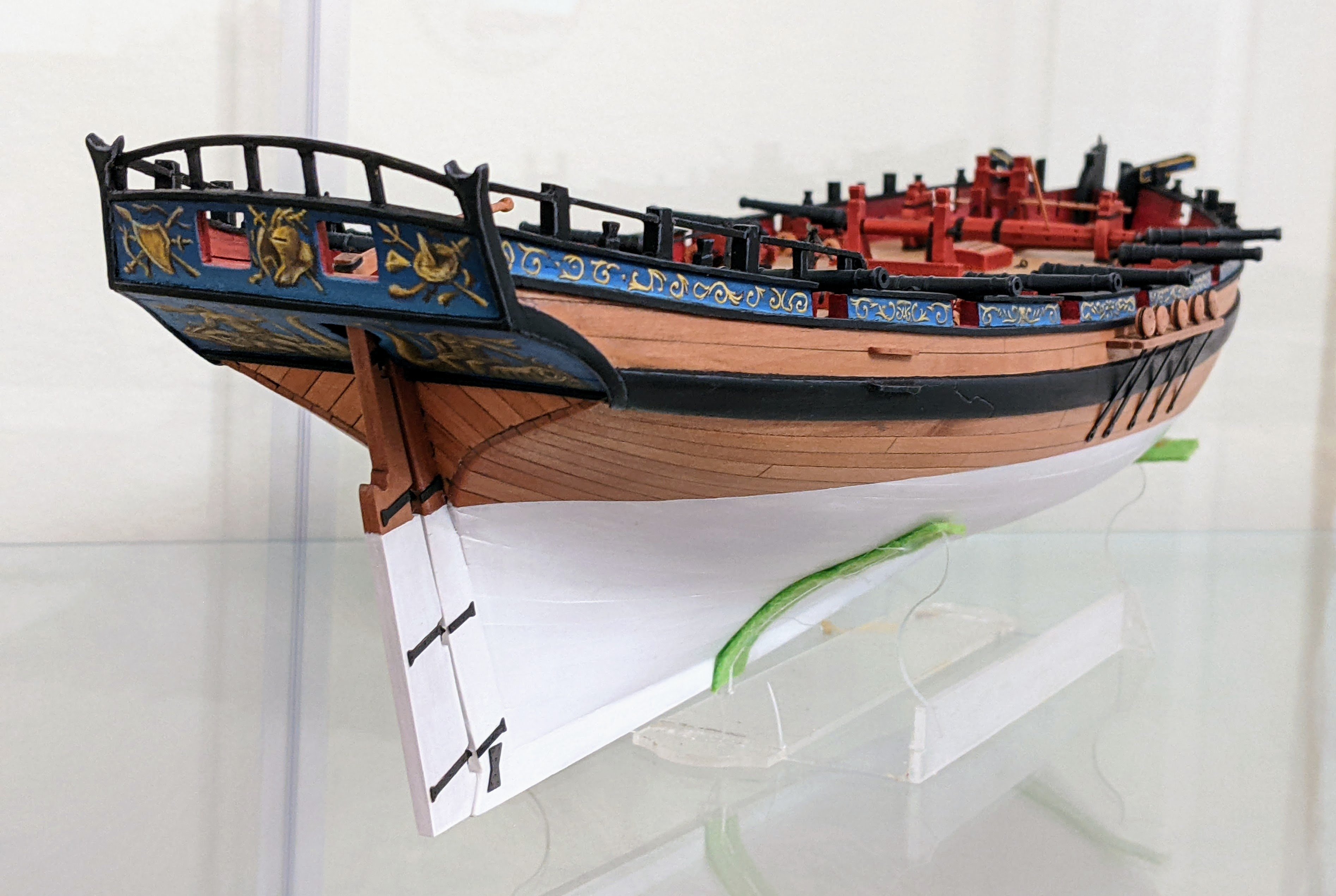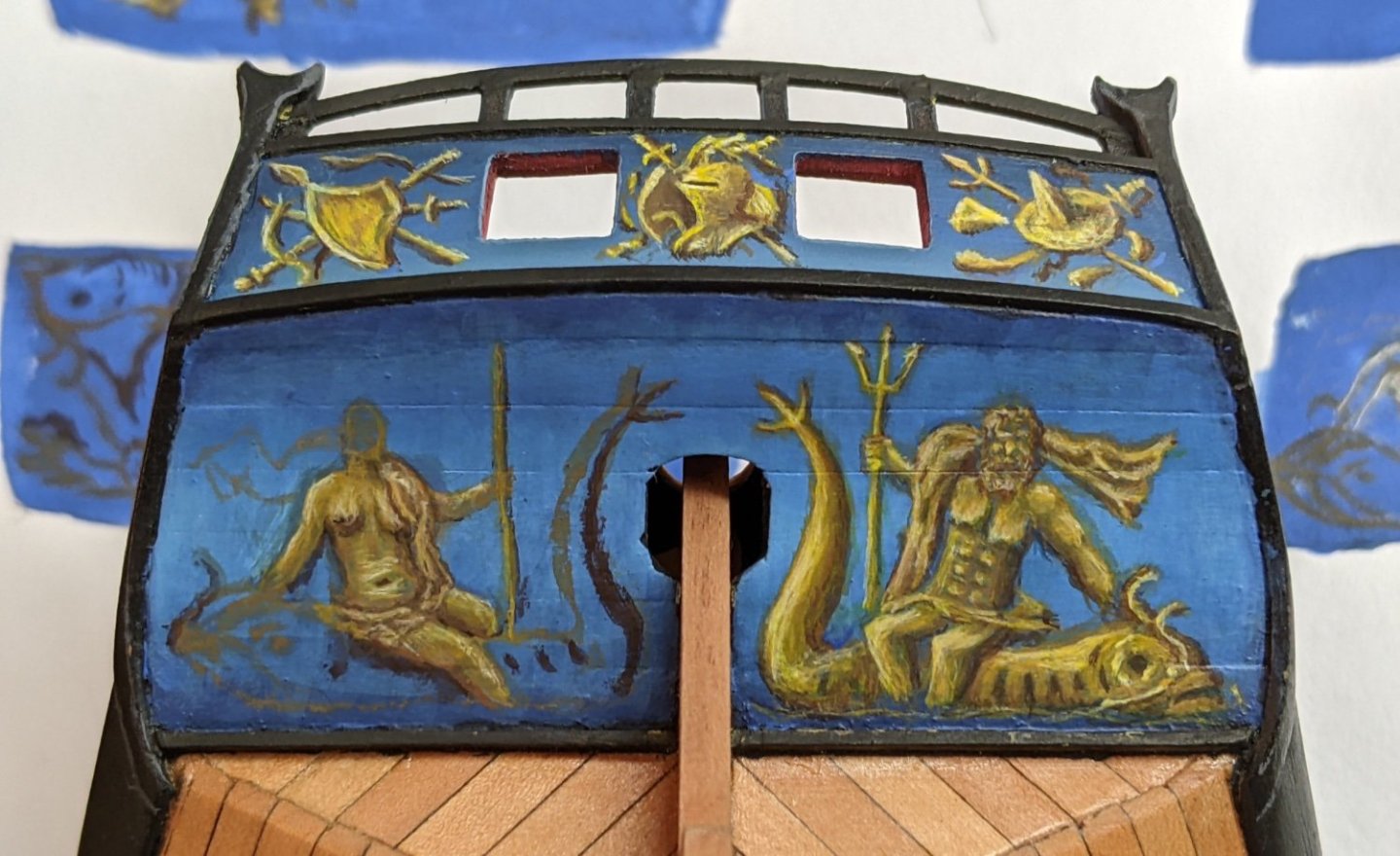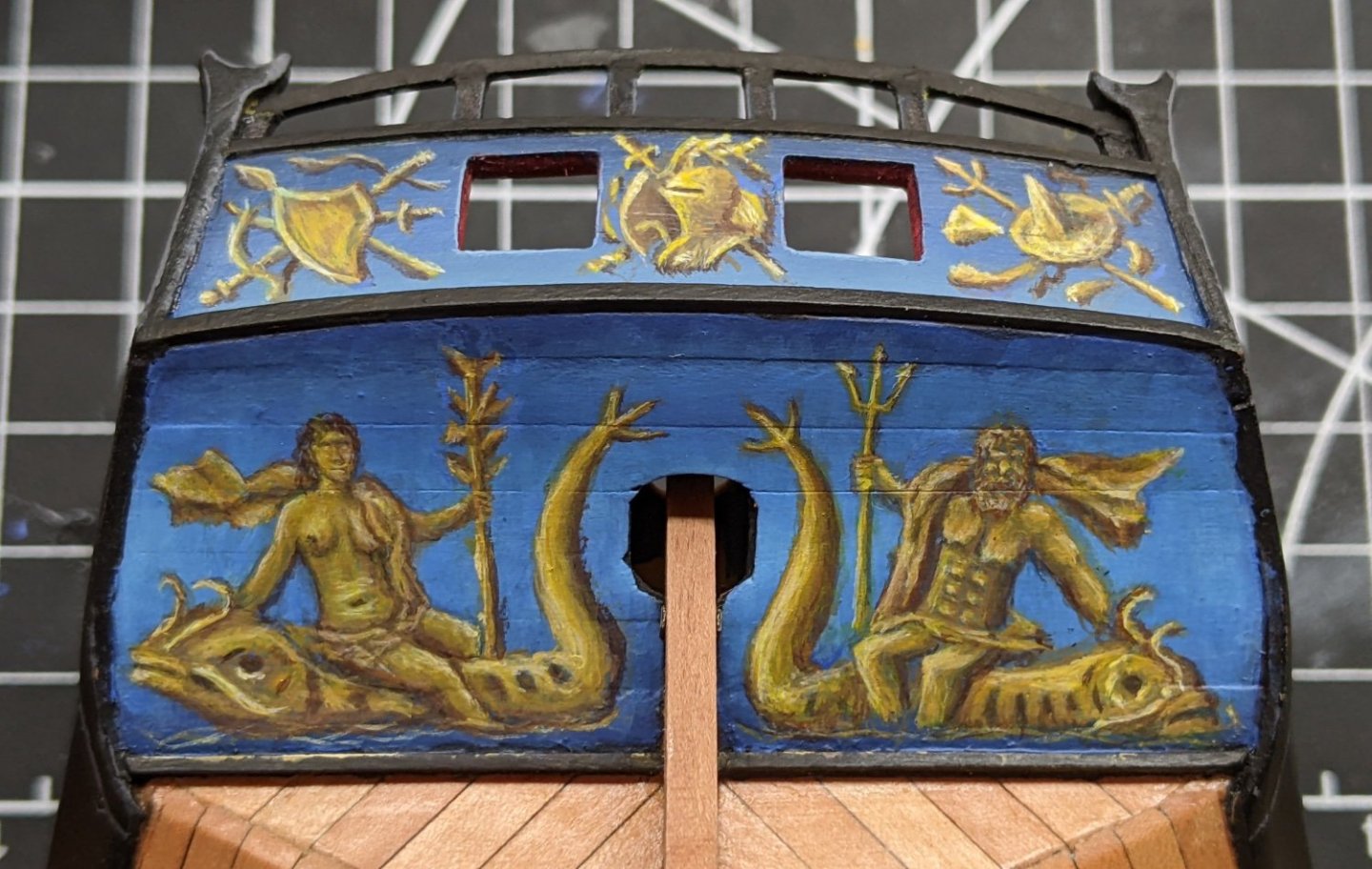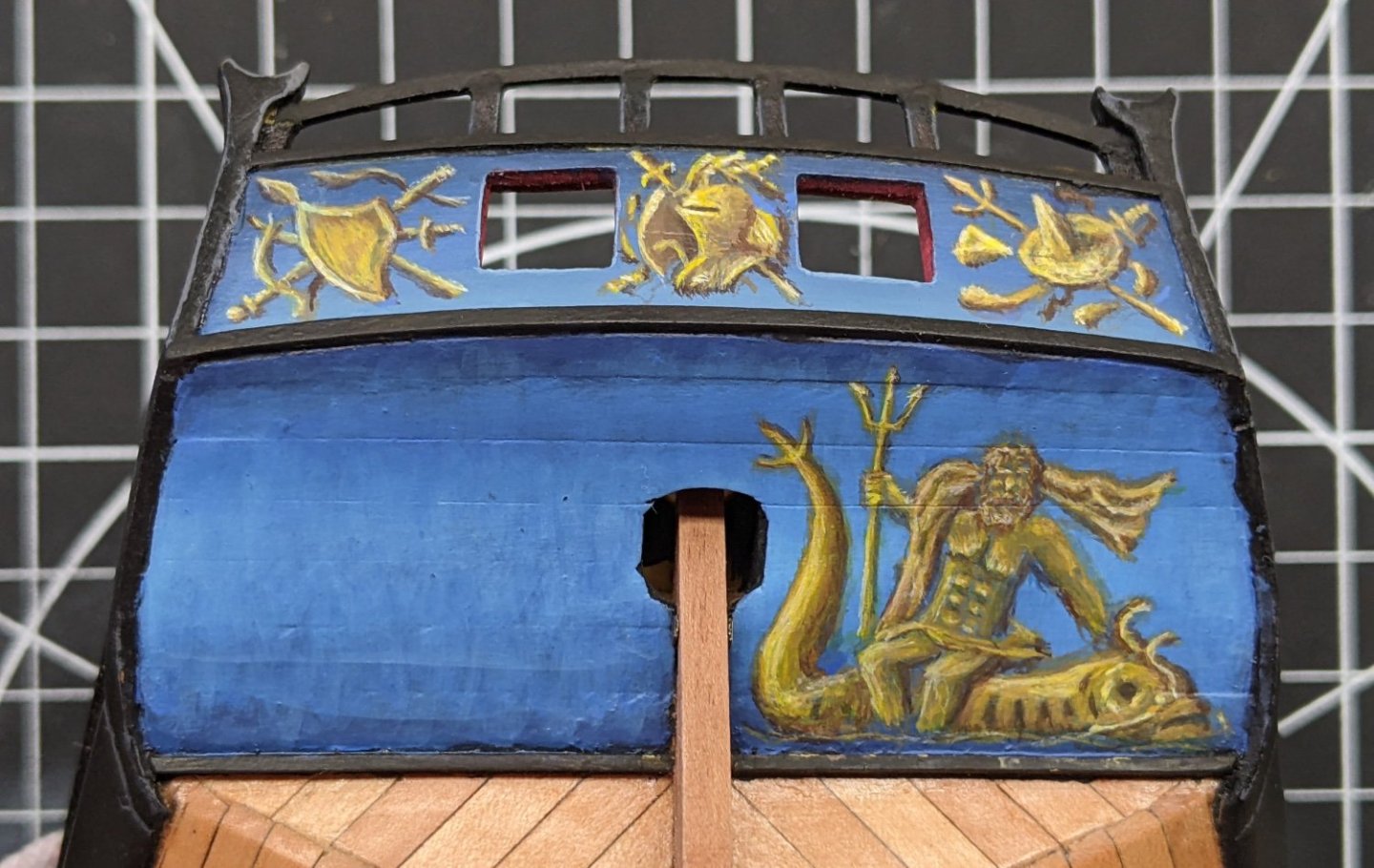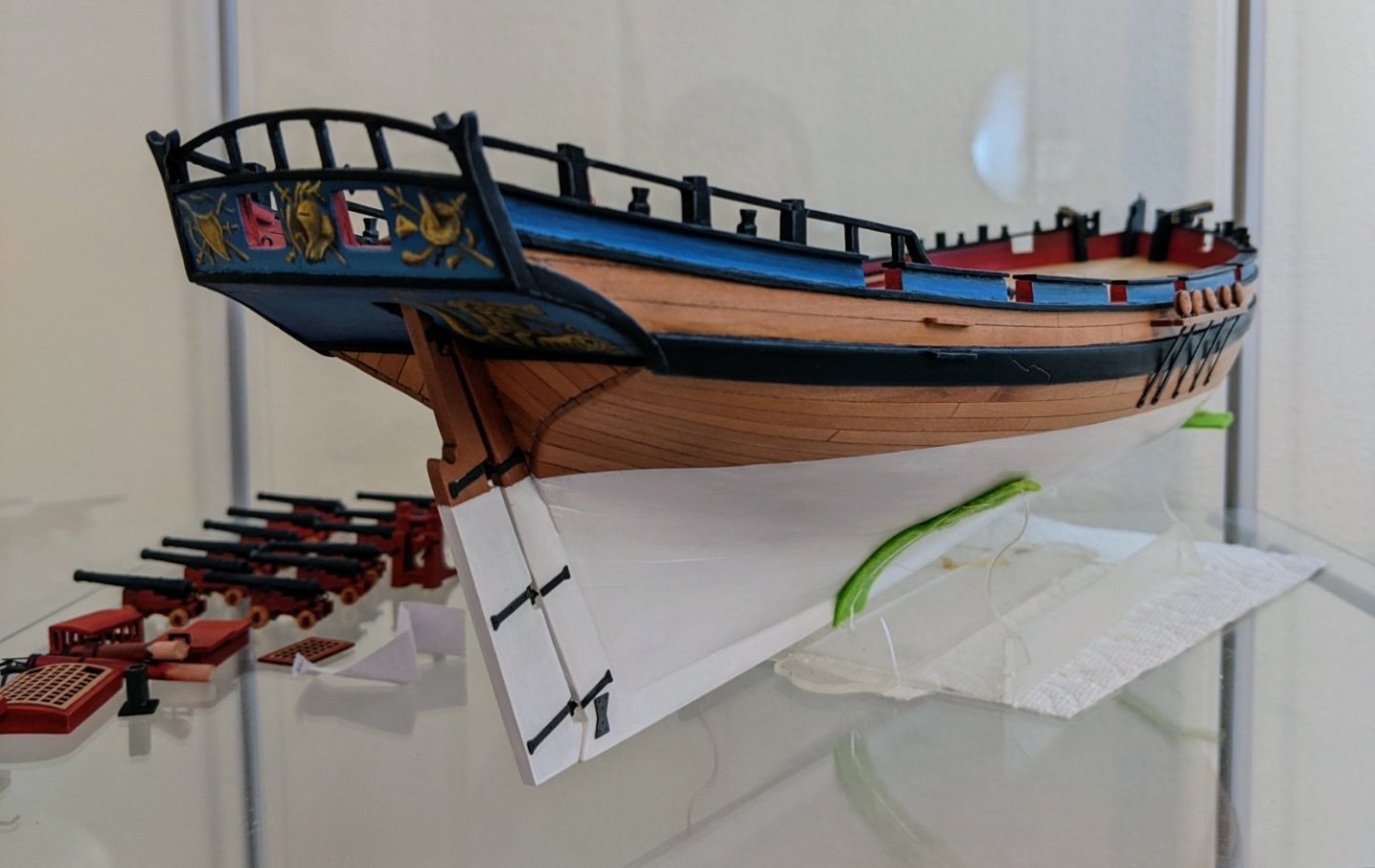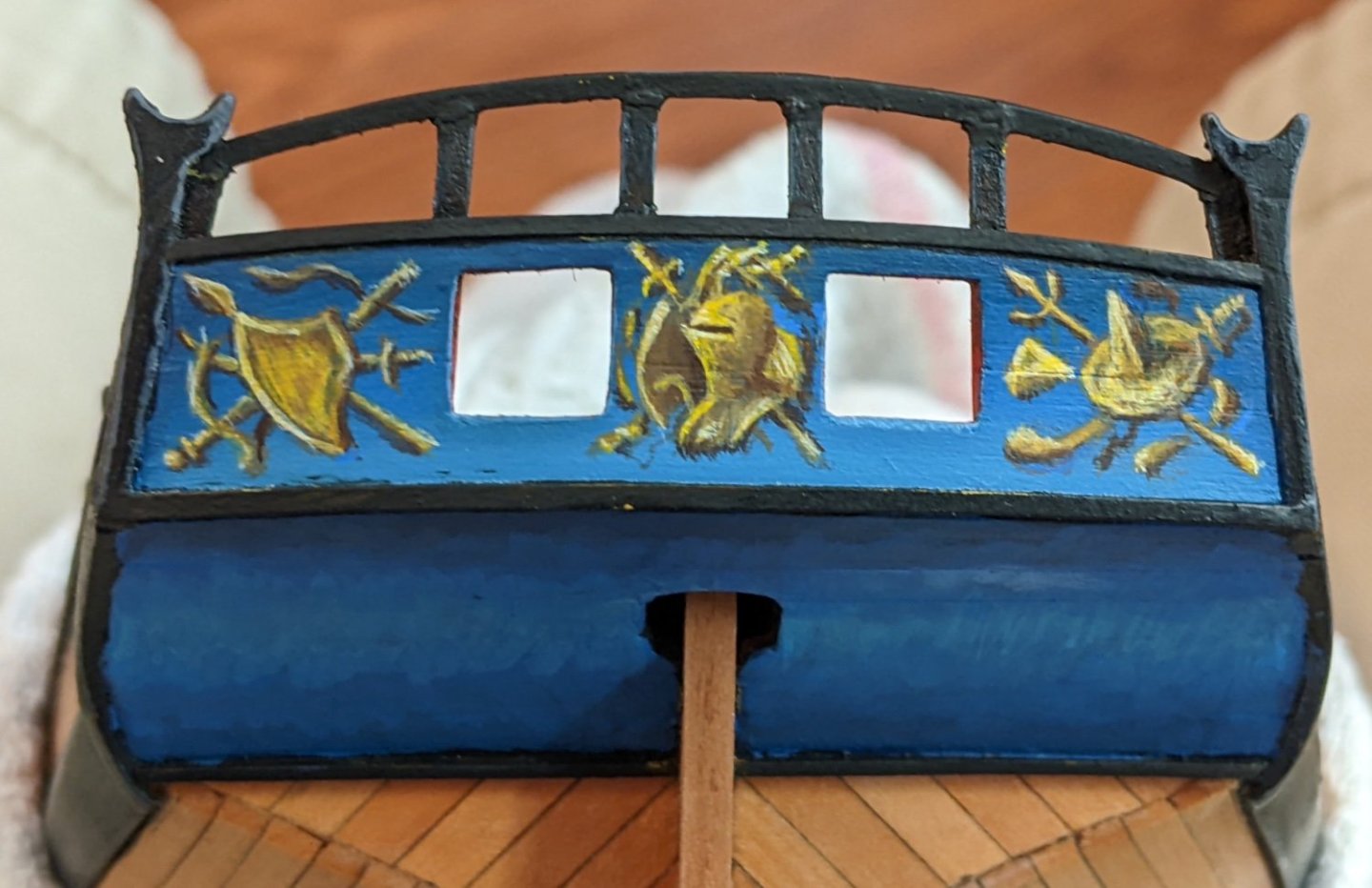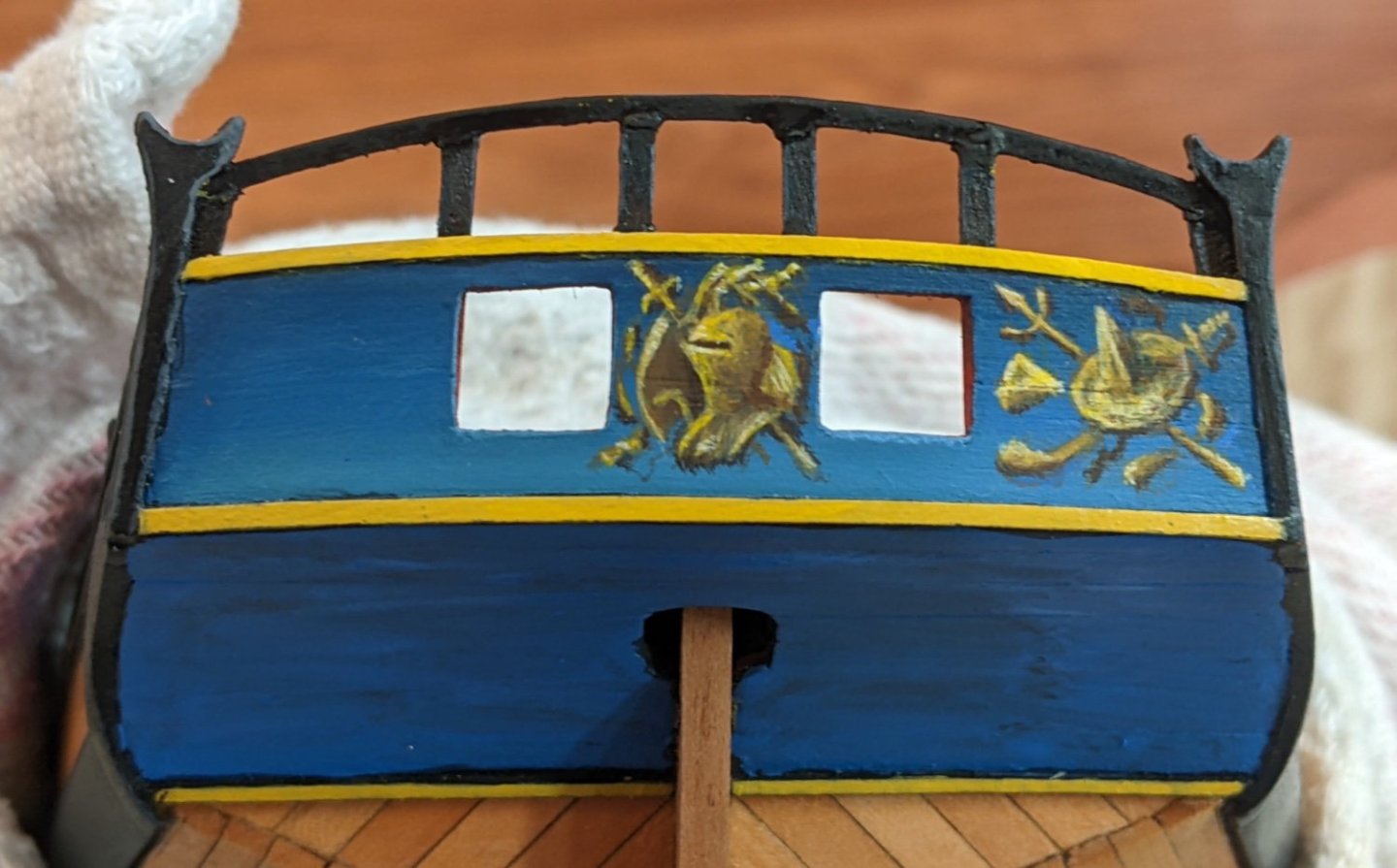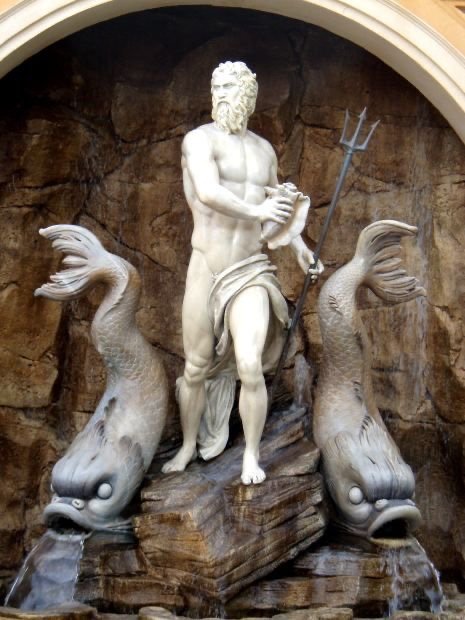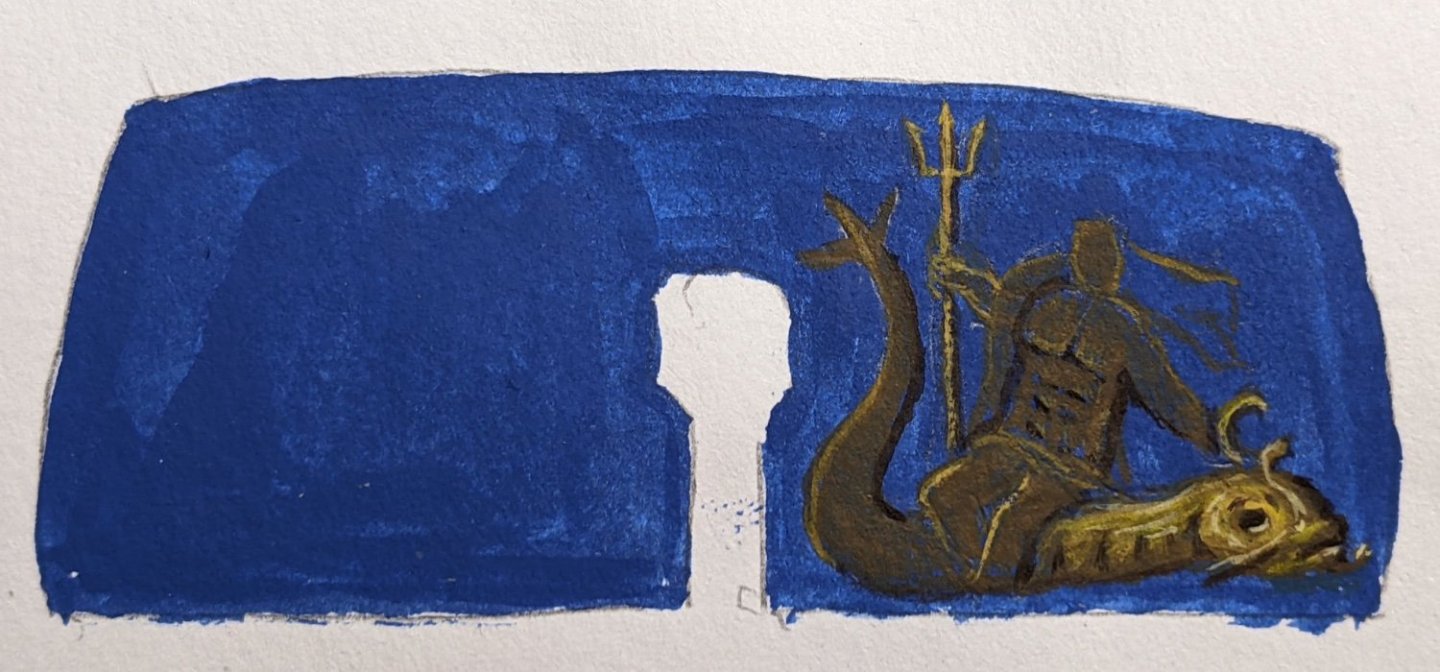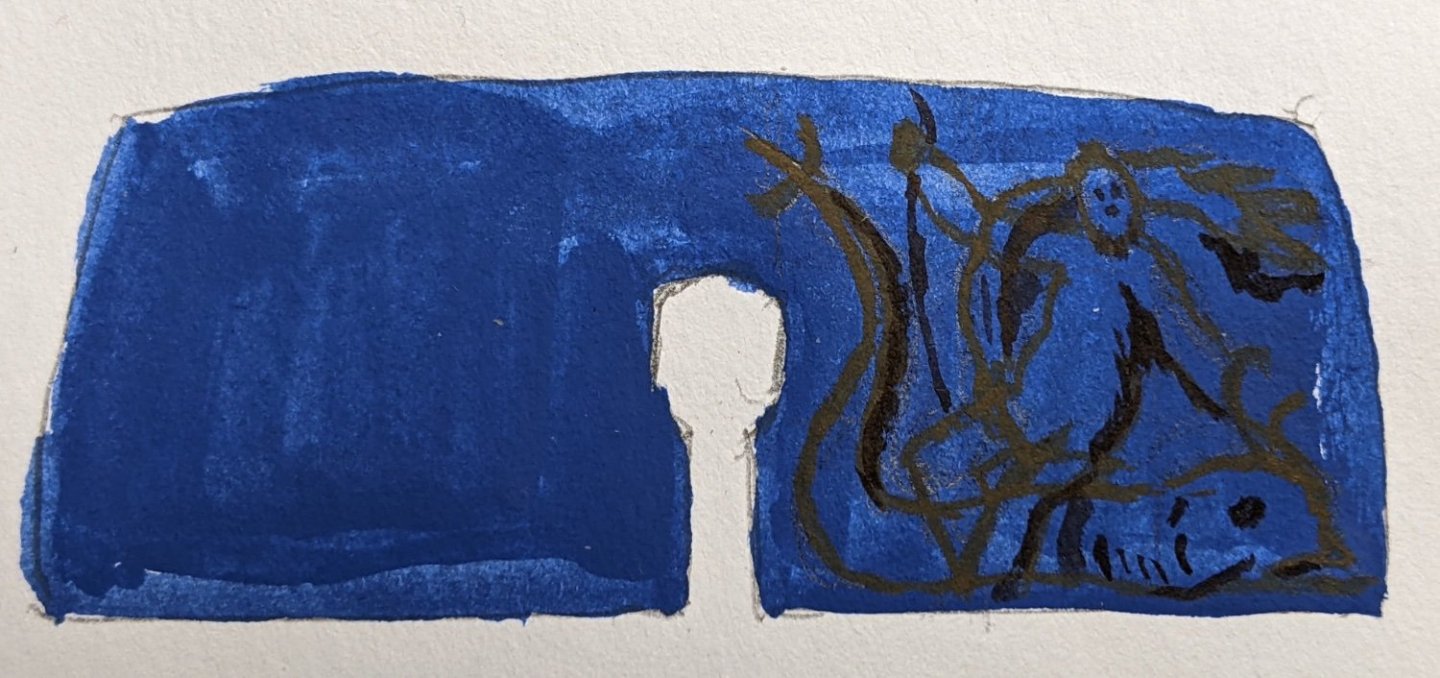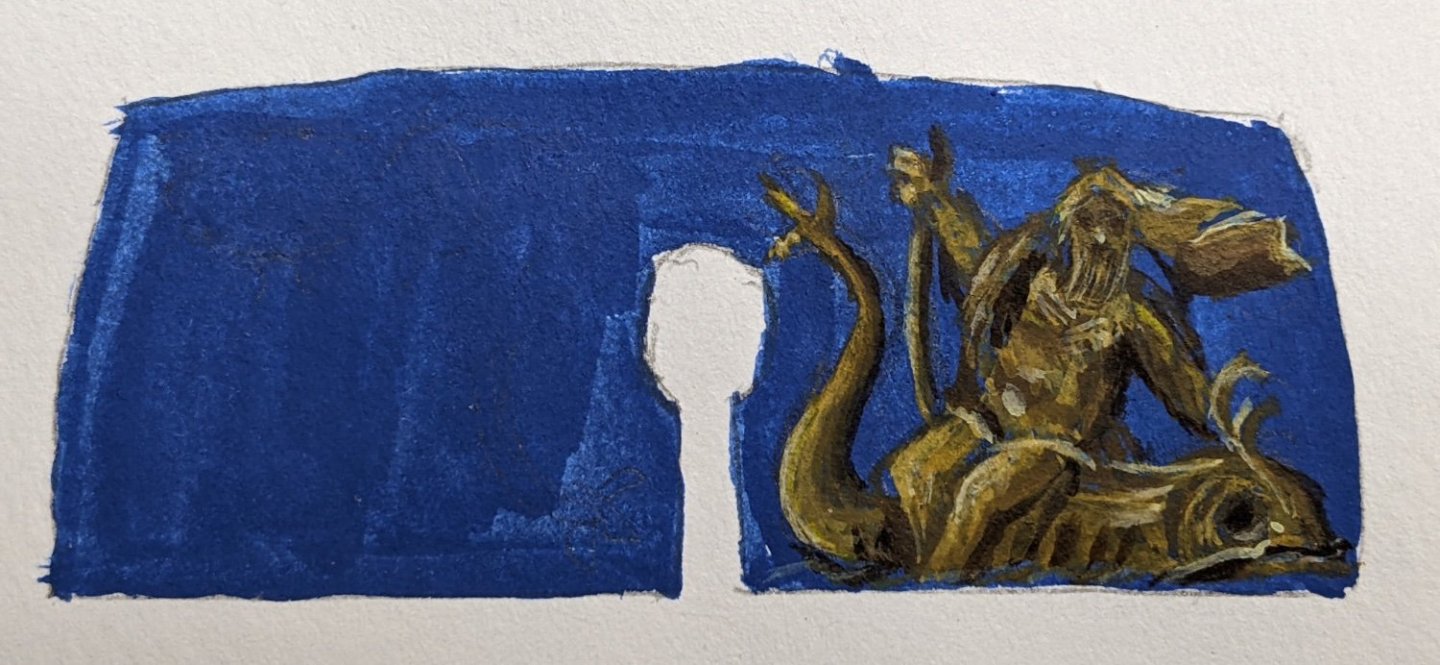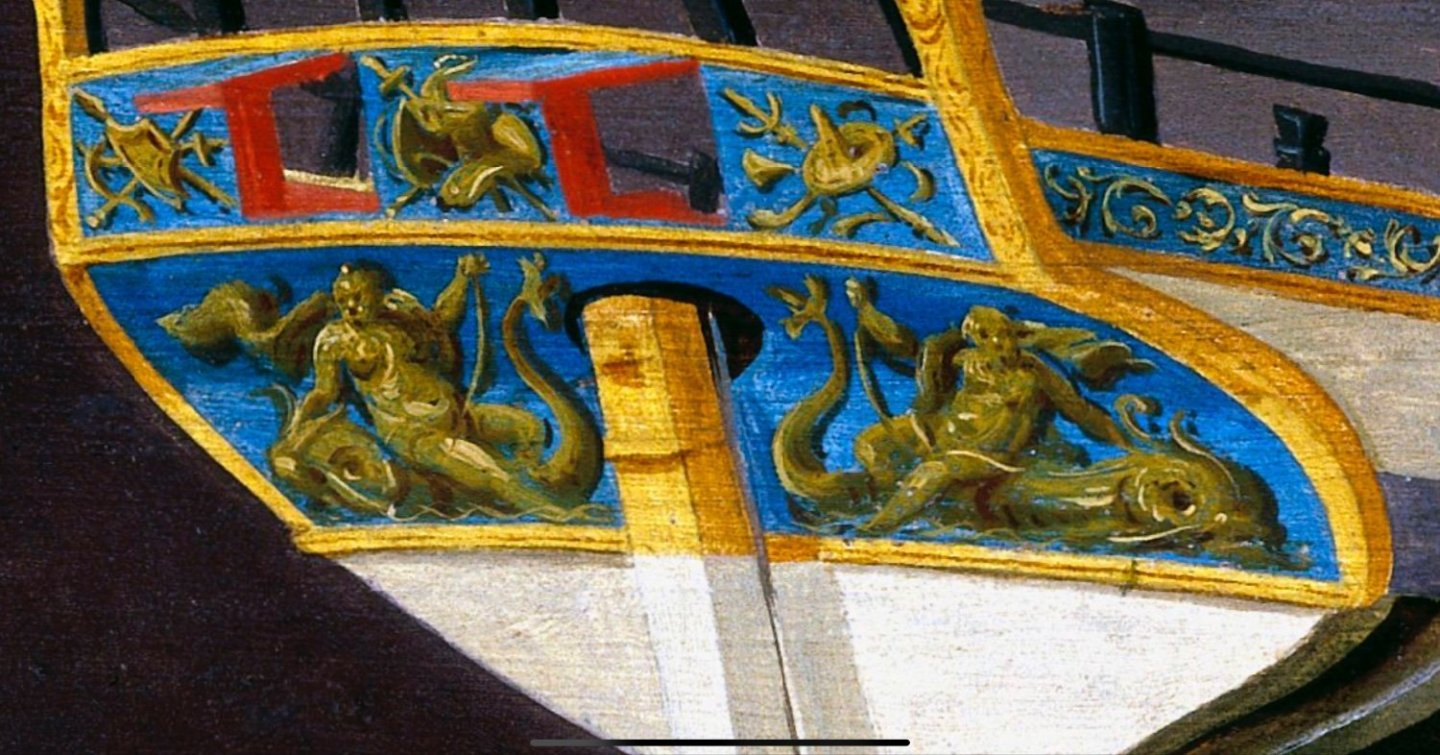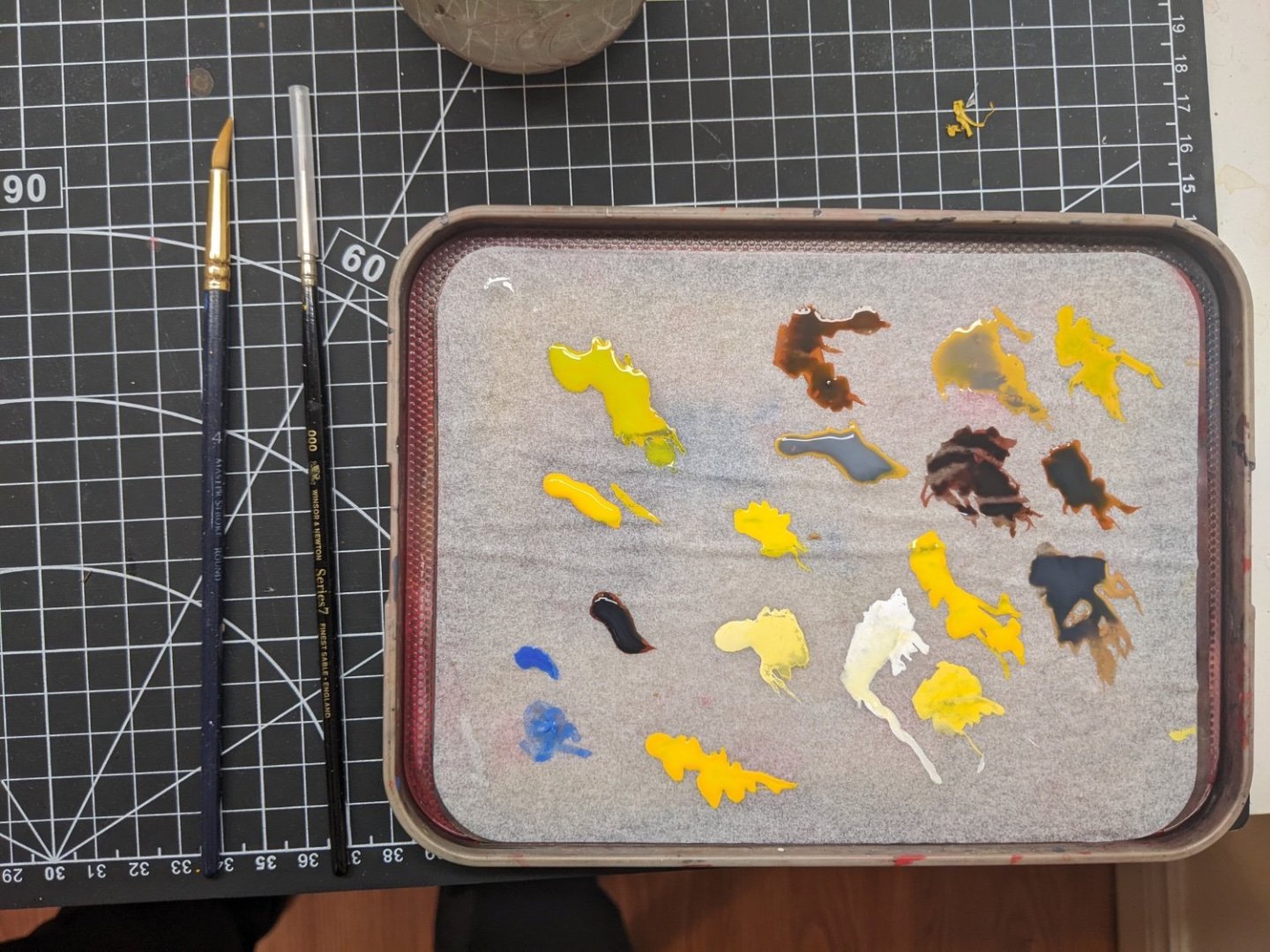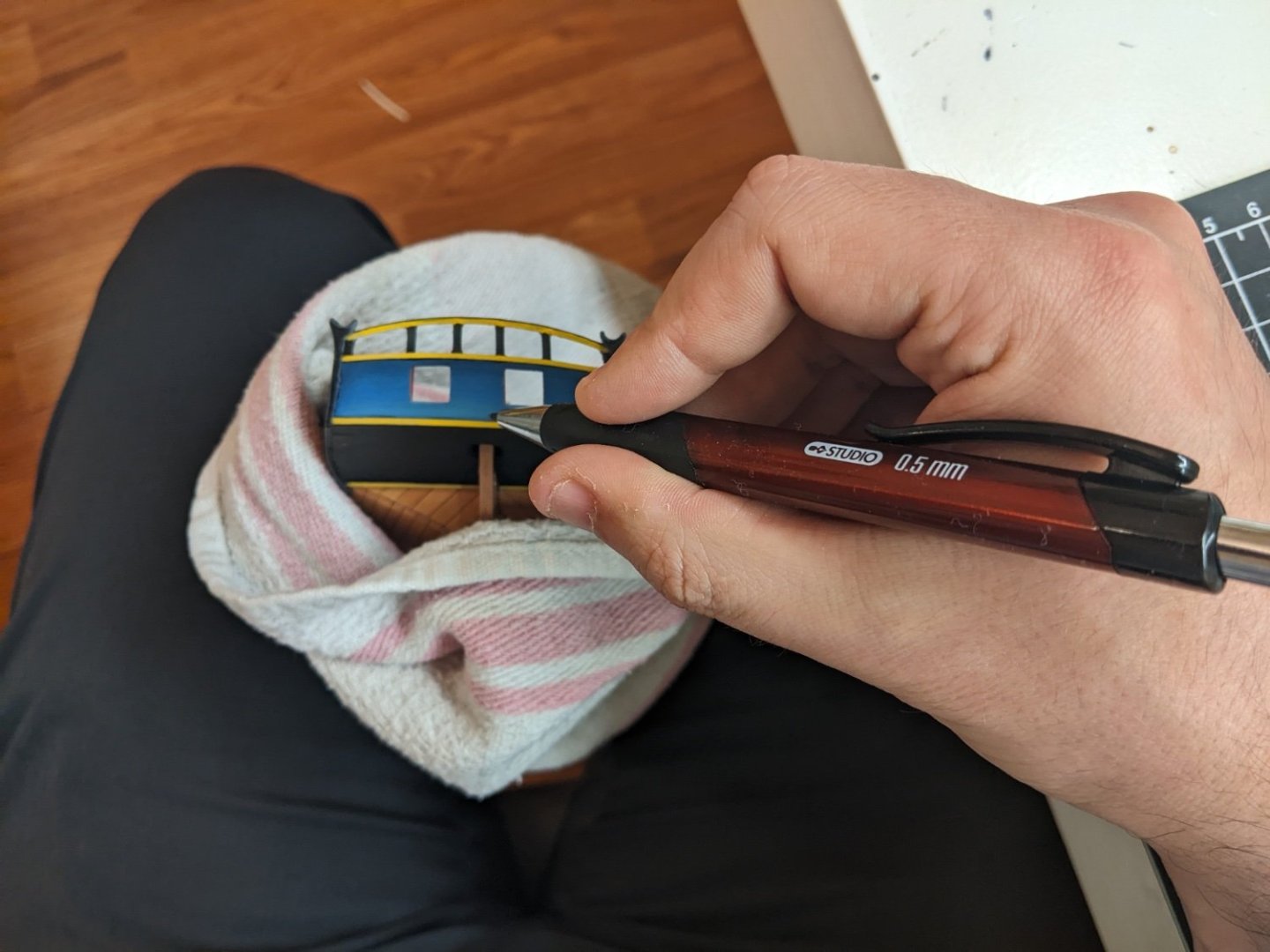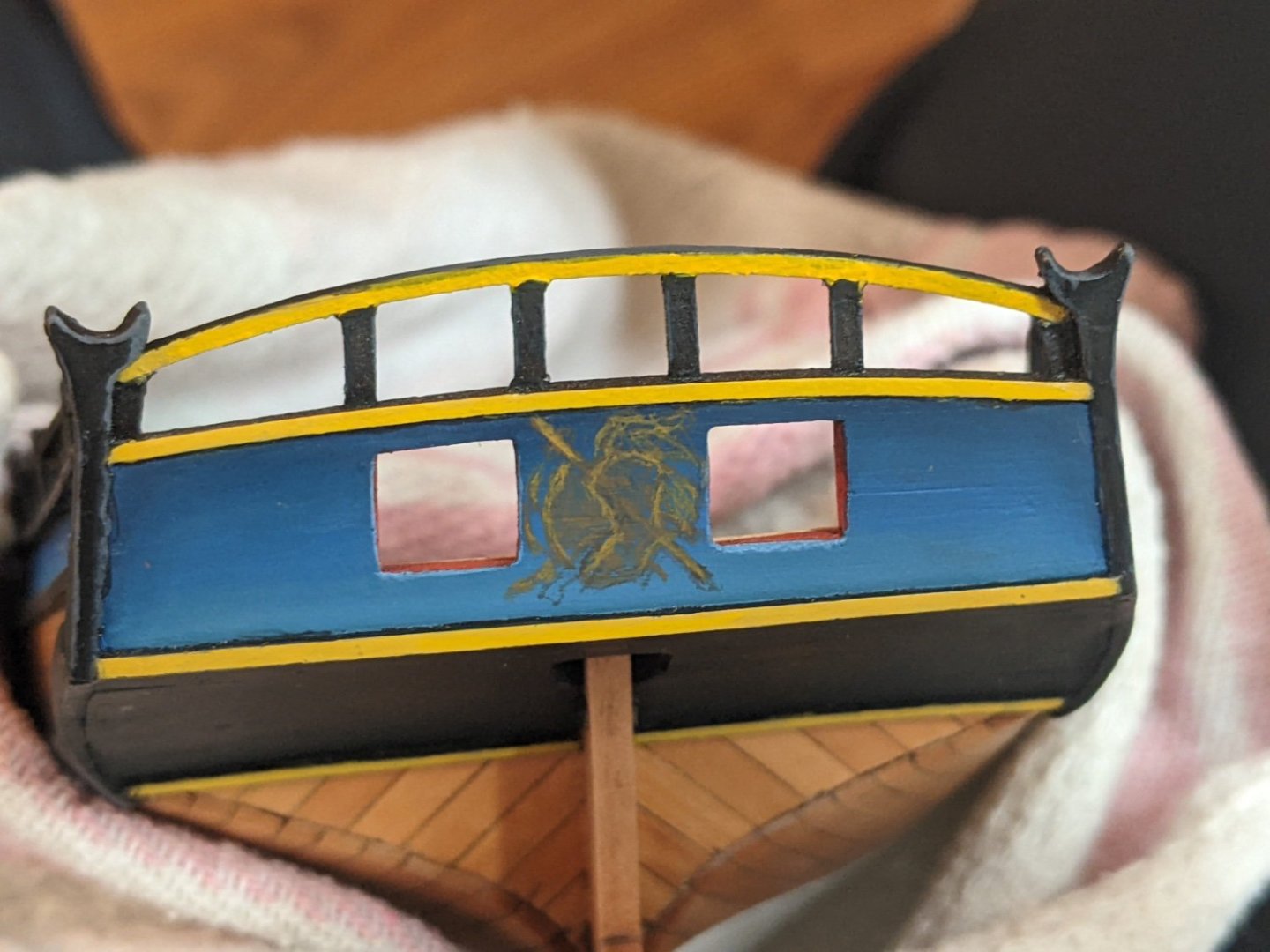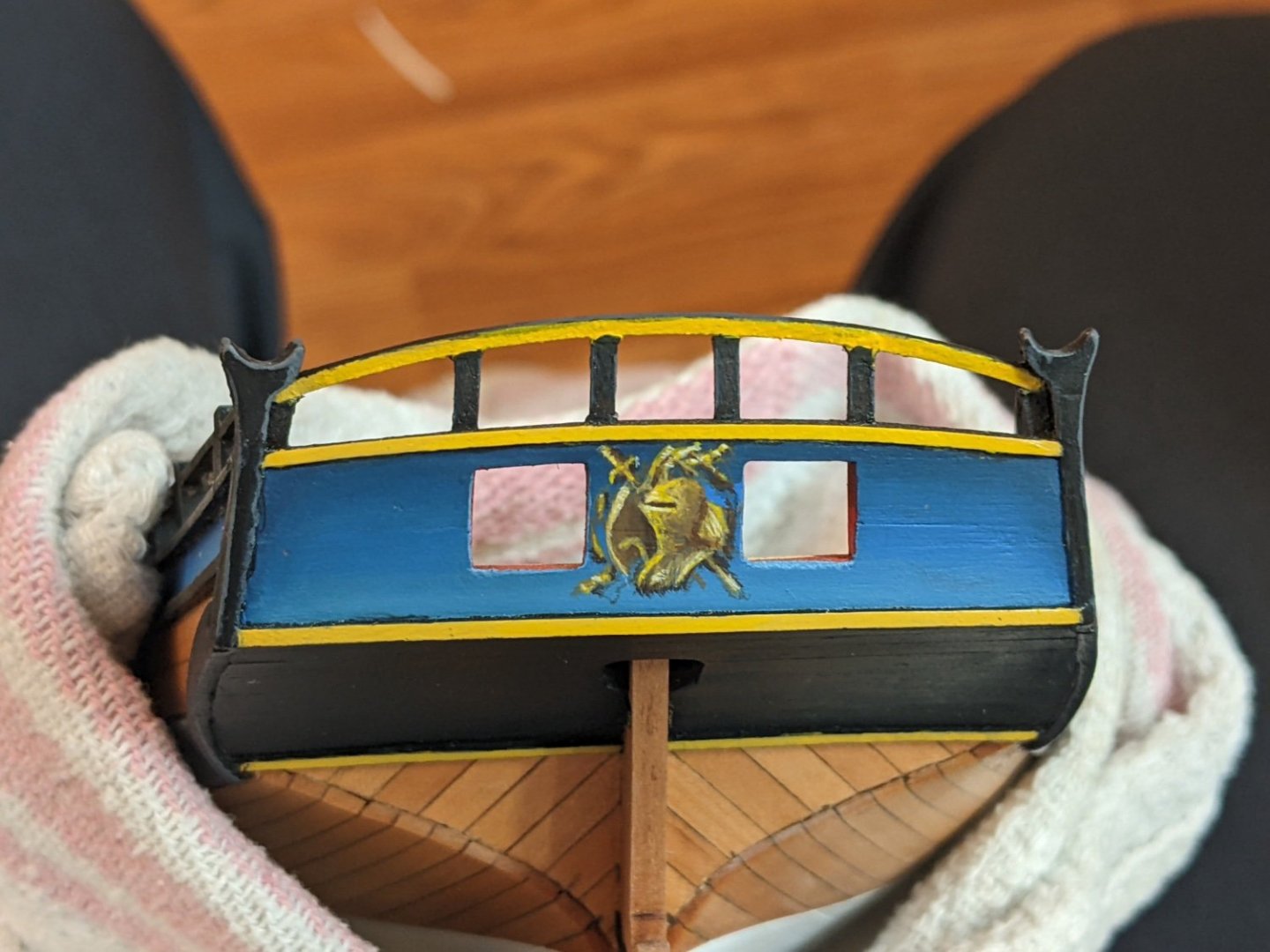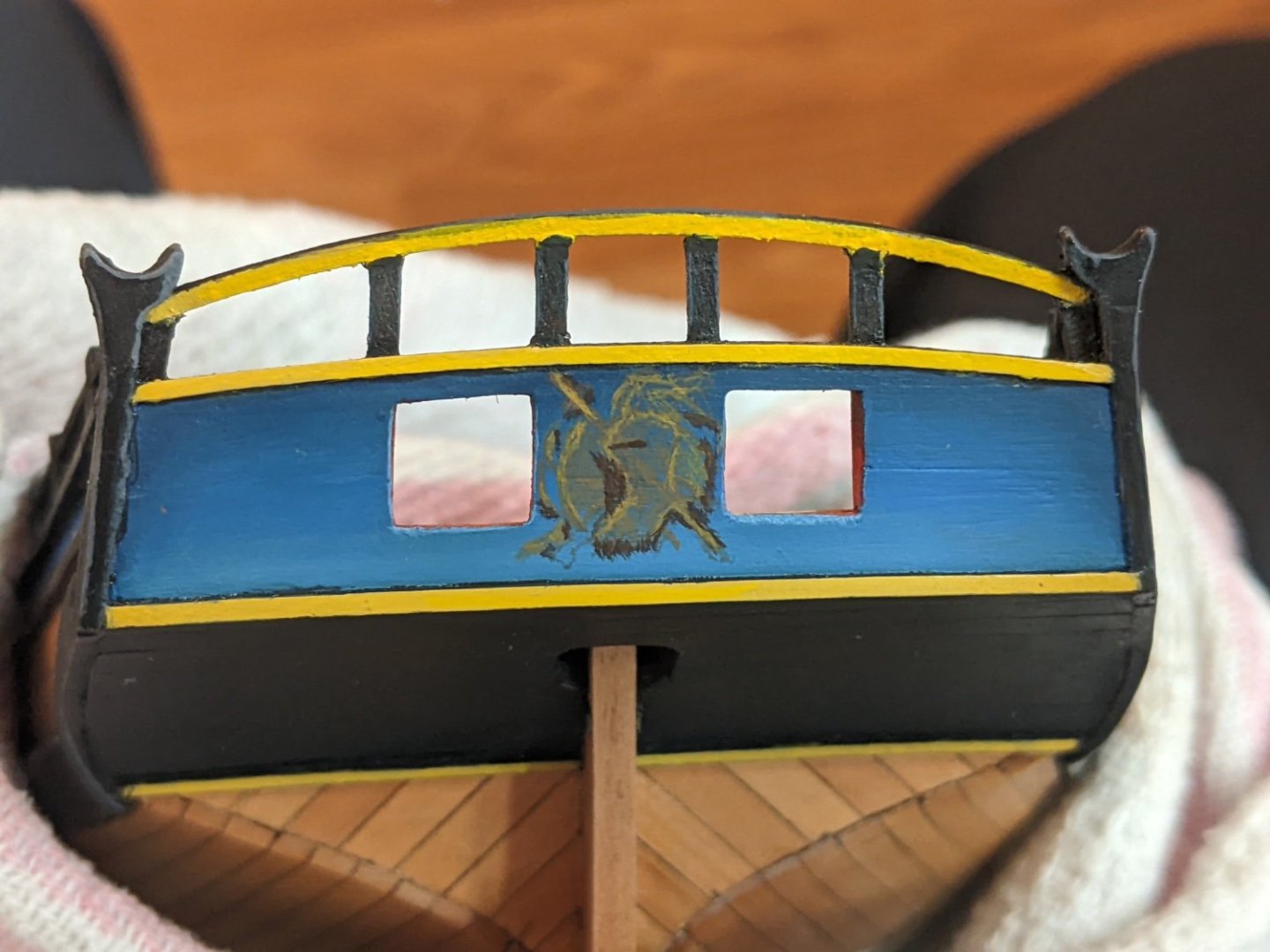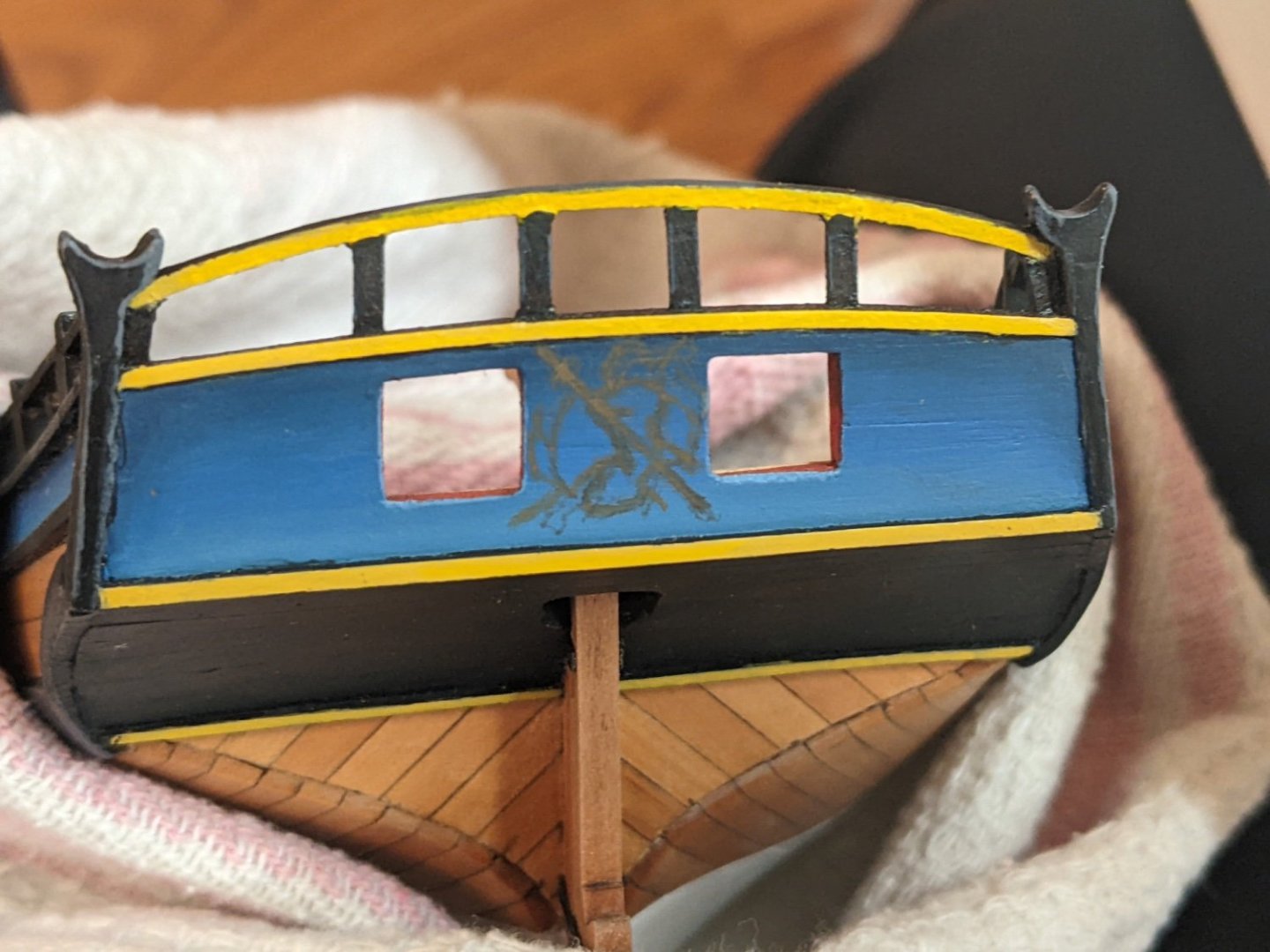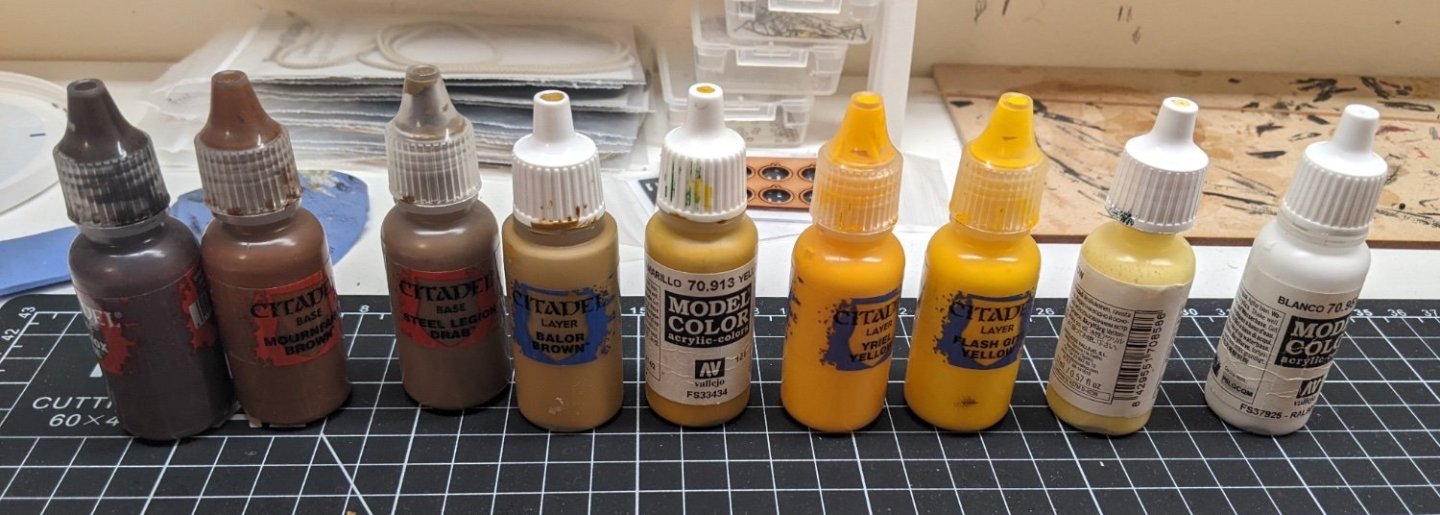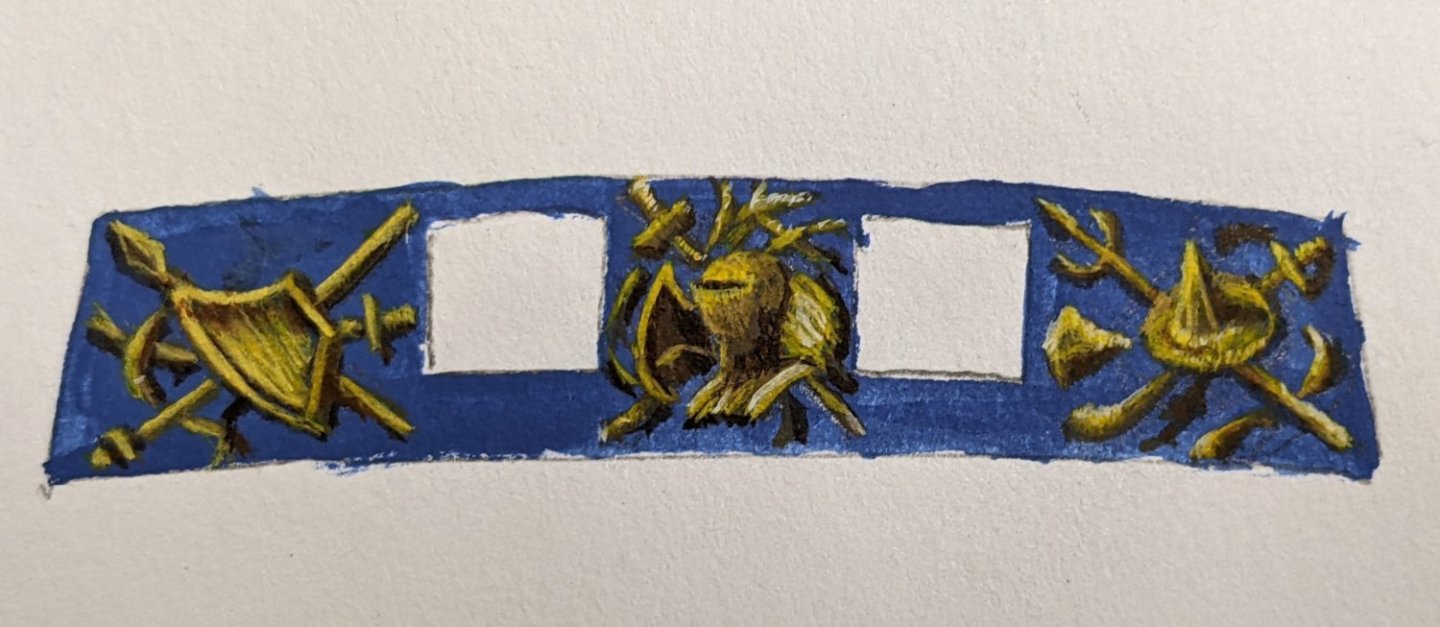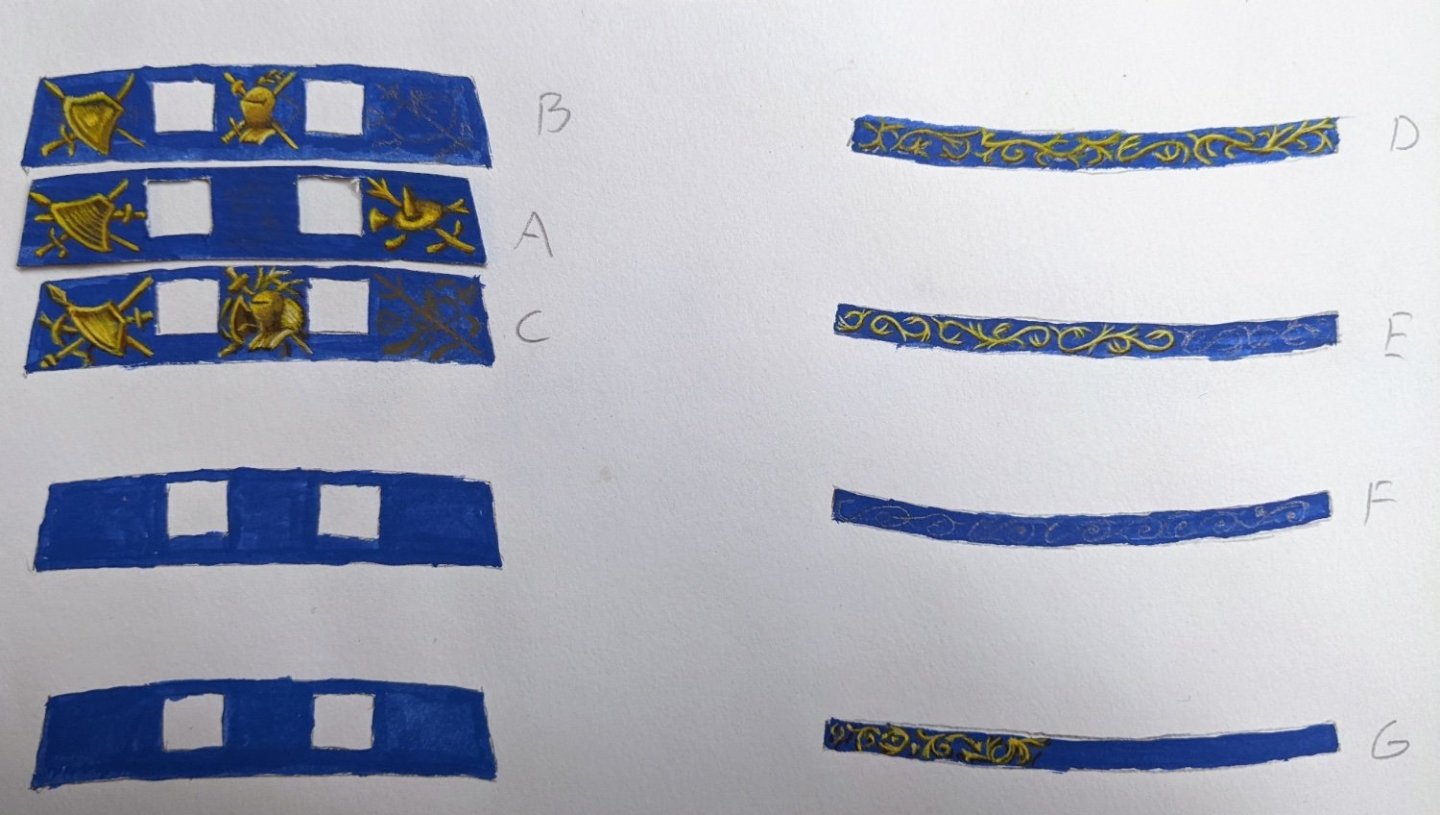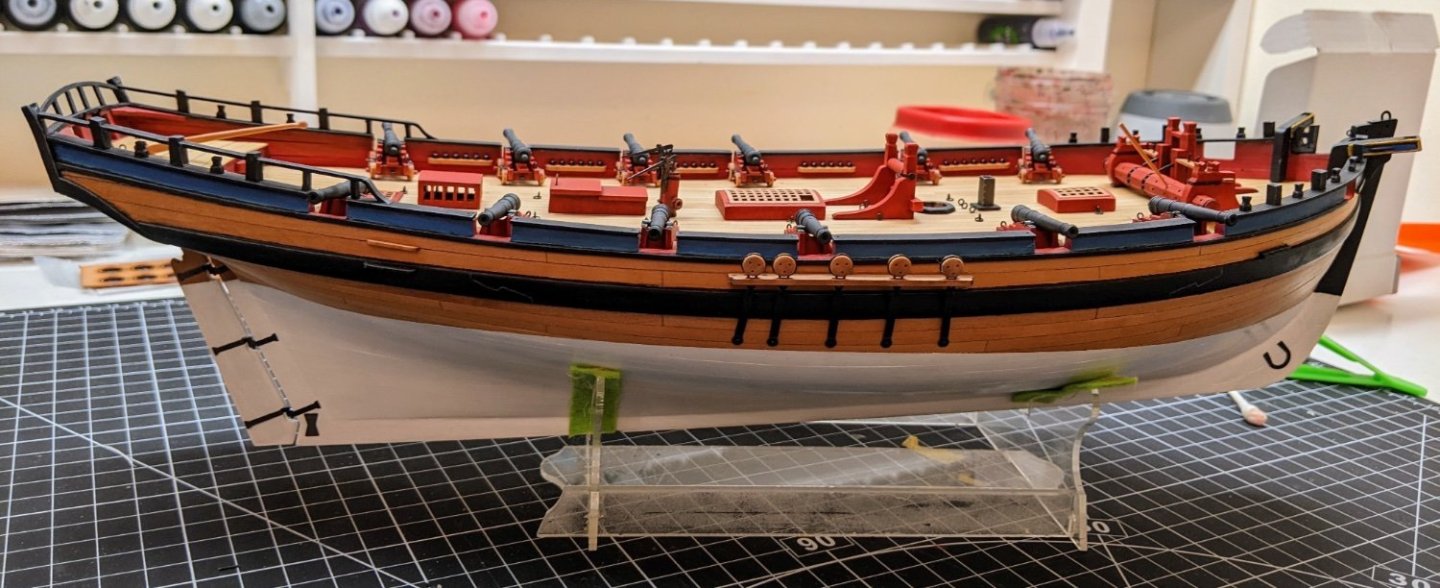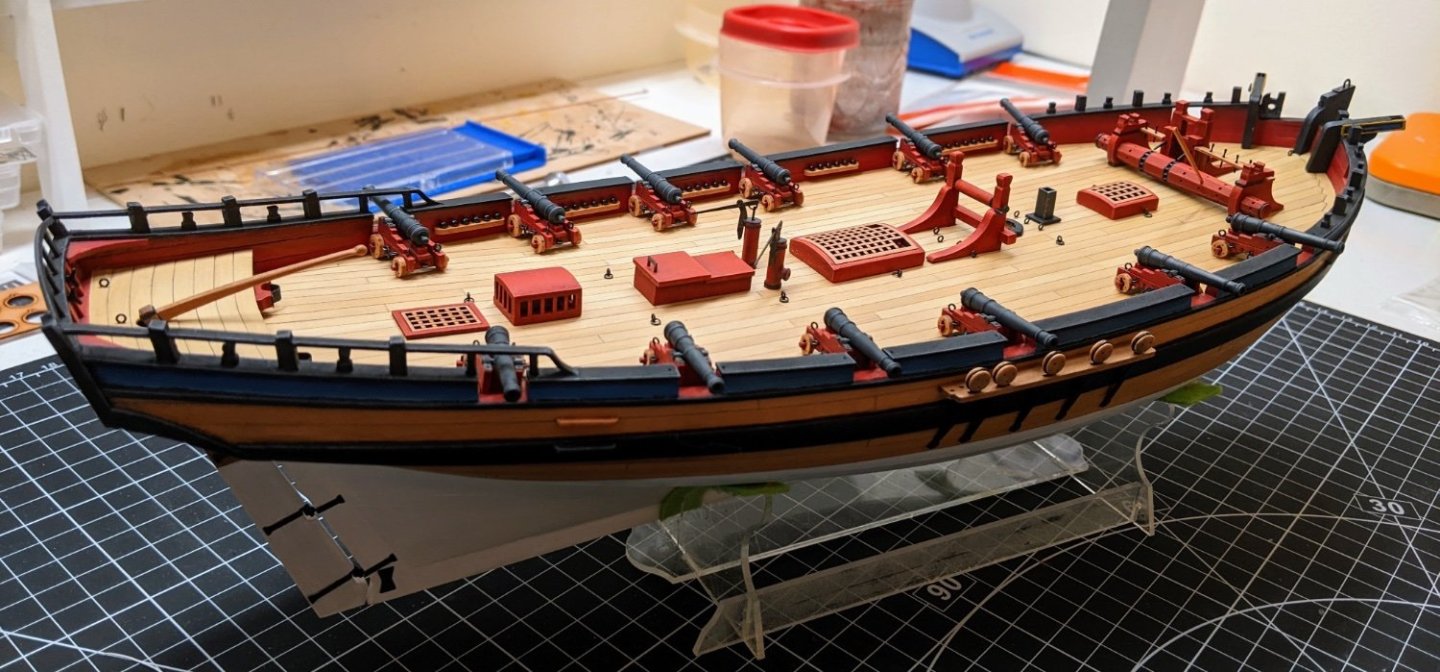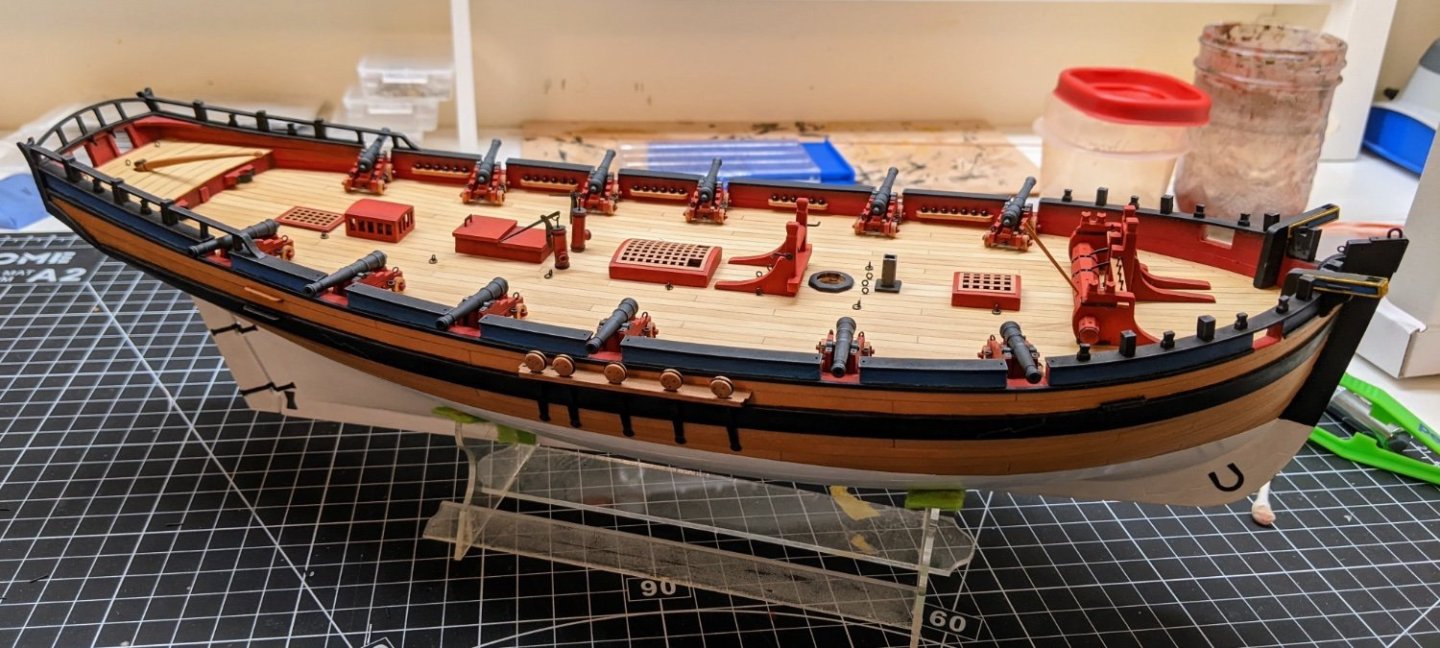-
Posts
1,345 -
Joined
-
Last visited
Content Type
Profiles
Forums
Gallery
Events
Everything posted by Thukydides
-
That is pretty frequent. If you go look at the forum section for new members there is a post discussing the significant number of people who start a build log and never get the model finished. That is why starting with something small (as you have done), is a good idea. I think even in my relatively short time here I have seen a number of build logs I was following just stop posting. Life happens or people just loose interest. I myself had a period of several months where I made no progress on Alert due to a combination of life being busy and being unsure how to proceed with a problem I had with the model. This lead to me feeling unmotivated to work on it and it took some effort to push through that. You will likely have a similar moment and the key is to find little tasks on the model you can get done. I find that having progress to share helps me to want to do more.
- 562 replies
-
- vanguard models
- alert
-
(and 2 more)
Tagged with:
-
Enjoy, there are a lot of good logs on the lady nelson which will help you on your way.
- 16 replies
-
- Lady Nelson
- Victory Models
-
(and 1 more)
Tagged with:
-
Nice, which one? Cutters are a great first model. Take it slow and read as many build logs as you can. It is always better to learn from others mistakes 😃.
- 562 replies
-
- vanguard models
- alert
-
(and 2 more)
Tagged with:
-
Time for another work in progress picture. I have been slowly working on Salacia (the wife of Neptune). After a few test versions, mostly to try and plot out the layout, I dived in. One thing I have found is that it helps to have a lot of reference photos of the subject. These come in two types: 1) On model pictures (such as the Marshall painting) for getting down the colour and style: https://collection.sciencemuseumgroup.org.uk/objects/co521412/cutter-alert-oil-painting 2) The subject depicted in other artwork to help with context: https://en.m.wikipedia.org/wiki/Salacia#/media/File%3AAffreschi_romani_-_nettuno_anfitrine_-_pompei.JPG https://www.encirclephotos.com/wp-content/uploads/Belgium-Antwerp-Salacia-Goddess-Statue-954x1440.jpg This is my progress to date: I feel much better about the cloth on her than I do about Neptune. I plan to depict her holding the stick wth the leaves as she is portrayed in the statue I referenced above. I think this will add balance and contrast where they are both mirroring each other holding an object, but the objects better represent who they are. EDIT: And i got the counter done. I also adjusted neptune a little. Next on to the sides.
- 562 replies
-
- vanguard models
- alert
-
(and 2 more)
Tagged with:
-
Nice fix. I had a similar problem planking alert, but I caught it a bit earlier before it had become so pronounced and was able to just adjust the thickness of the planks to compensate.
- 648 replies
-
- Indefatigable
- Vanguard Models
-
(and 1 more)
Tagged with:
-
I have now finished painting Neptune for the most part. I may go back and make some minor adjustments smoothing some of the transitions more, but it is good enough I think for me to move on to Salacia on the other half of the counter. The toga flowing over his shoulder is the part that I am least pleased with and depending on how I feel about it in a few days I may try to redo that part. I also figured I would show a picture from further away as the zoomed in photos in some ways make it look much more rough than it appears in person.
- 562 replies
-
- vanguard models
- alert
-
(and 2 more)
Tagged with:
-
it is looking good glenn, enjoy your holiday.
- 587 replies
-
- Indefatigable
- Vanguard Models
-
(and 1 more)
Tagged with:
-
Another quick update, I got some more time today to do some painting so I finished the transom. I added an extra wavy thing to the image as it looked a bit empty without somthing to fill in the space above the shield. I also have started blocking in the highlights for the blue background on the counter. Still lots of work to make the transitions nice and smooth, but it should give you the general idea of what I am going for. I also decided to get rid of all the yellow edges as I felt that either I need to go all ocher (as in the marshall painting) or all black. Once I have the main painting done I will touch up a bit and add the edge highlights.
- 562 replies
-
- vanguard models
- alert
-
(and 2 more)
Tagged with:
-
They both show fore and aft as opposed to what was done on the model. The image is designed to correct the problem of the holes right by the coming. In other words the image is designed to illustrate a different problem, but in this case it also shows how they should run fore and aft. In any case the model is looking great 😃.
- 341 replies
-
- Sophie
- Vanguard Models
-
(and 1 more)
Tagged with:
-
It’s looking good. I particularly like the work on the wales.
- 648 replies
-
- Indefatigable
- Vanguard Models
-
(and 1 more)
Tagged with:
-
Time for another minor update. I have not had a lot of time to work on the model lately so progress has been slow. However I was feeling confident enough in the right side of the transom mockups to attempt it on the model. I also made the decision to take the plunge and commit to painting the lower counter. I have only done the first coat on the counter (hence why it looks patchy and doesn’t have the gradient). I also made the decision to paint the top rail of the transom (not sure what it is called) black instead of the ochre in line with the marshall painting.
- 562 replies
-
- vanguard models
- alert
-
(and 2 more)
Tagged with:
-
Waterline looks good to me eye. Good job. You are trucking along pretty quick and will catch up to me before long.
- 59 replies
-
- Alert
- Vanguard Models
-
(and 1 more)
Tagged with:
-
Log #38: Mockups of the lower counter I have continued to work on draft versions of the various images I hope to paint on the ship and given my success with the first one I gave in to feature creep and decided to make some attempts at the lower counter. These are much more complicated images and they are made more difficult by the perspective in which they are painted. I can’t just copy them as they are since the space they are painted on in the painting are two very different shapes from the actual counter. Below you can see my first mockup. This one did not get very far before I decided I did not like the way I had drawn it. I stopped after outlining the shape and blocking in some of the shadows. This next one I largely painted trying to replicate the marshall painting. At this point I am not trying to get perfectly smooth transitions, I am just trying to prove that I can largely produce what I want. Though I was happier than this one, I discovered through this attempt however that the perspective stretching was not working very well and the dolphin leaves something to be desired. At this point I decided that I needed to bring in some other sources to help better define the images and to allow me to deviate a bit more from the painting. I discovered that these are likely Neptune and Salacia and I found this lovely image of neptune with two “dolphins” looking very similar to the ones on the Alert. I noticed that he is generally depicted as very muscular so I decided to try and incorporate this more into the illustration. So here is the final attempt (up to this point). I am much happier with the proportions and the dolphin does look much more like what is depicted in the painting. I also feel that doing my own interpretation of the toga or or whatever piece of cloth is going over his shoulder was probably going to be better than exactly replicating what Marshall did. Finally I made the decision to add his trident to solve some of my space issues. I stopped where I did as though I feel this is better than the previous, I wanted to scale up the image to make sure it fills a little more of the counter. Hopefully the next one will be my final mockup before trying it on the actual ship.
- 562 replies
-
- vanguard models
- alert
-
(and 2 more)
Tagged with:
-
As a general rule it is better to remove the masking tape while the paint is still wet. You can also try to prevent the edge from happening by doing several very thin layers. If the edge is already there you can use a very fine grit sandpaper to lightly sand it down. Then you can use a paintbrush to carefully fix up any parts that got sanded too far or the edge got messed up by the sanding process. The key is to have a very light touch and go slowly.
-
Welcome aboard. This is a great place to get help and on your journey into ship modeling. Two things I would suggest that will help you succeed: 1) Start simple - pick a relatively simple model to start with. 2) Start a build log - I cannot articulate how much help and advice I have gotten through people commenting on my build log. All the best.
-
Log #37: Painting the Transom Images Having done a bunch of practice versions I decided it was time to take the plunge and try putting some paint on the model. I still need to do more practice on certain elements, but I felt confident enough in the centre element to give it a try. In case anyone else ever wants to try this I figured I will document the process for this one in detail and subsequent ones I will just show the final result. For the painting I am using acrylic paint. You can see all the colours I used for reference below. I also used a wet pallet (mine is a fancier one, but you can make one with a plastic tub and a bit of parchment paper). I highly recommend the use of the wet pallet for painting with acrylics as it stops the paints drying out too quickly and you can mix the colour easily as needed. I also primarily used a W&N series 7 000 brush. It has a very fine point which helps with the detail we are trying to get here, but if you are a new painter I would recommend using a cheap synthetic brush until you learn not to ruin them. I also have a cheap walmart brush I use for blocking in larger colours if needed. Step 1 is to find a good position to paint in. I wrapped the model in a dish towel and lightly held it between my knees level with my table. That way I could rest my wrist on the table to steady it as I painted. I used a mechanical pencil to lightly map out the shape. Then using my main shadow colour I blocked in a rough outline of the shapes. I then filled in the areas to be covered with this shadow colour and then outlined some of the brighter highlights with a slightly darker ochre colour. Then it was time to place the darkest shadows so now the highest highlights and lowest shadows have been sketched in. Note the highlights are not very bright at this point, I just am marking where they will go. Unfortunately I got absorbed and didn’t take any pictures after this point. However it was mostly following the same process, just with increasingly higher highlights, refining the shapes as I went. I constantly shift colours going lighter then back to may shadows again trying to blend the transitions. It still probably needs some miner refinements, but I think it holds up well.
- 562 replies
-
- vanguard models
- alert
-
(and 2 more)
Tagged with:
-
Another quick update. I have finished a mock up of the right hand side of the transom and though I am not entirely sure what everything in it is, I think it is a reasonable representation of what is in the painting. I am least pleased with the left side as in the marshall painting that side of the transom appears smaller and I have to "stretch" the art to make it fill the area.
- 562 replies
-
- vanguard models
- alert
-
(and 2 more)
Tagged with:
-
As a cutter the stern drags a bit so the waterline is not parallel to the keel. You can see this if you look at the plans. You want to place it on the stand (this will put it at the right angle) and then use the plans to figure out how high to put the waterline. If you look at this post from my log you can see how the white is higher at the stern than the bow. https://modelshipworld.com/topic/29520-hm-cutter-alert-by-thukydides-vanguard-models-164/?do=findComment&comment=894531 Is it just me or does the wale on one side look higher than the other. It may just be a quirk of the picture but it looks to me like you need to lower the left hand wale a little where it meets the stem.
- 59 replies
-
- Alert
- Vanguard Models
-
(and 1 more)
Tagged with:
-
Another minor update. I have been working on trying to get down the painting style. All your comments and suggestions have been a huge help. In the picture you can see a number of my attempts, you may notice a common theme of them not being good enough, but I think they are slowly getting better: A - My first attempt at the transom which I have already shown. B - My second attempt, still pretty far from what is depicted in the painting. This was my first attempt at the tilting helmet. C - My latest attempt. The shield on the left I didn’t get the shape of quite right. My transom is a little different shape than in the painting so I have to adjust the items a bit. I am more pleased with the middle which though I am not sure what some of the stuff is, it looks much closer to the painting. On the right you can see me starting to block out the shapes for the right hand item. D - This was my first attempt at the freize E - My second attempt, better than the first, but still not very good. F - Another failed attempt. G - This is the first time I feel like I have sort of hit the style and flow. It still has some significant issues, but this is good enough that I am beginning to think I may be able to actually do this with enough practice versions.
- 562 replies
-
- vanguard models
- alert
-
(and 2 more)
Tagged with:
-
Thanks everyone for all the comments and help. I have been practicing on some paper and will share some of my attempts with you once I get closer to something I am happy with. I the meantime I have finished the cannons and so decided to take some shots of Alert with all the deck fittings temporarily in place before I have to remove them all in preparation for rigging the cannons and potentially painting the freiz. Lots of work left to go, but she is starting to look like a ship. EDIT: I realized after I took the pictures that I placed the jeer backwards :). Good there is no glue involved here.
- 562 replies
-
- vanguard models
- alert
-
(and 2 more)
Tagged with:
About us
Modelshipworld - Advancing Ship Modeling through Research
SSL Secured
Your security is important for us so this Website is SSL-Secured
NRG Mailing Address
Nautical Research Guild
237 South Lincoln Street
Westmont IL, 60559-1917
Model Ship World ® and the MSW logo are Registered Trademarks, and belong to the Nautical Research Guild (United States Patent and Trademark Office: No. 6,929,264 & No. 6,929,274, registered Dec. 20, 2022)
Helpful Links
About the NRG
If you enjoy building ship models that are historically accurate as well as beautiful, then The Nautical Research Guild (NRG) is just right for you.
The Guild is a non-profit educational organization whose mission is to “Advance Ship Modeling Through Research”. We provide support to our members in their efforts to raise the quality of their model ships.
The Nautical Research Guild has published our world-renowned quarterly magazine, The Nautical Research Journal, since 1955. The pages of the Journal are full of articles by accomplished ship modelers who show you how they create those exquisite details on their models, and by maritime historians who show you the correct details to build. The Journal is available in both print and digital editions. Go to the NRG web site (www.thenrg.org) to download a complimentary digital copy of the Journal. The NRG also publishes plan sets, books and compilations of back issues of the Journal and the former Ships in Scale and Model Ship Builder magazines.

